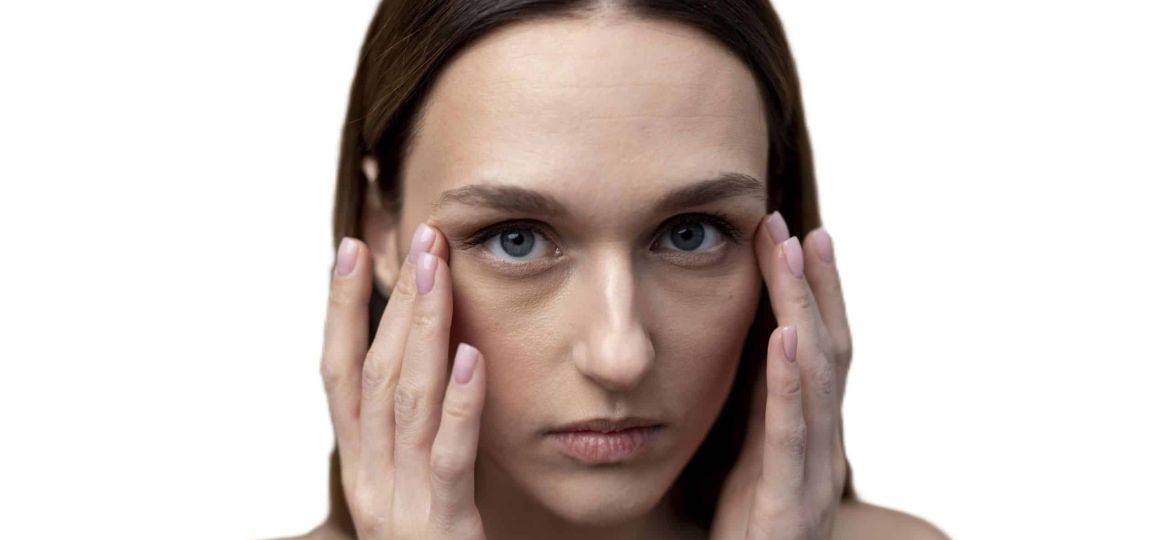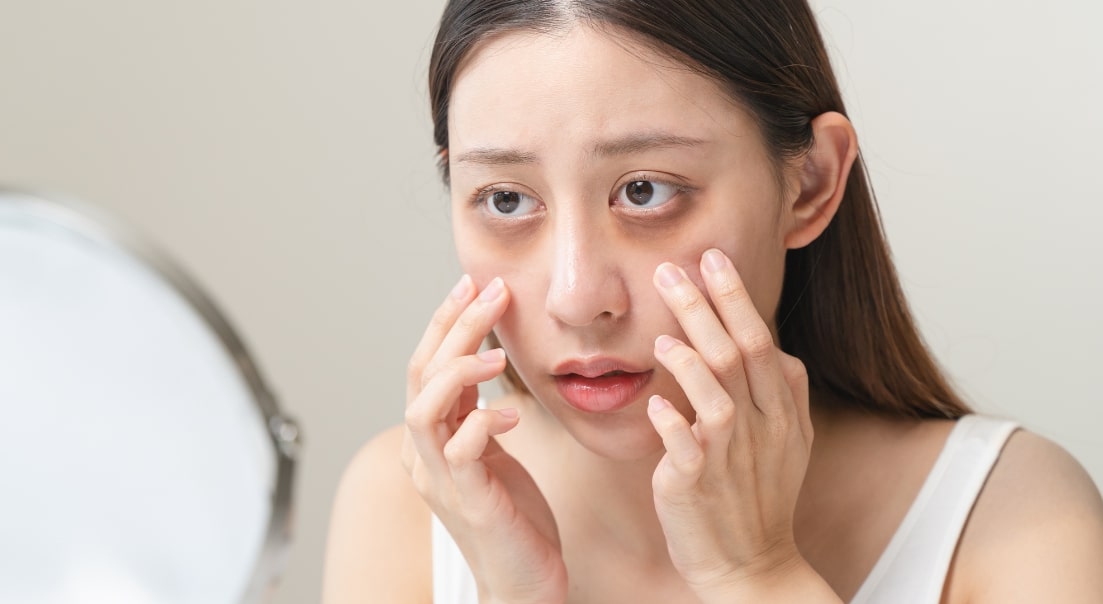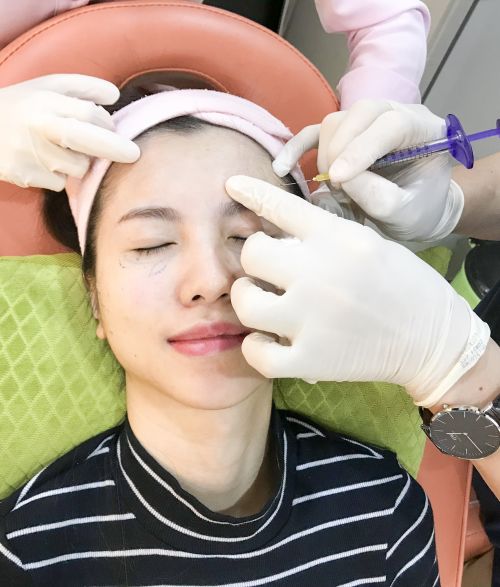
We’ve all heard it before: “You look tired.”
And for many, it’s because of those stubborn dark circles under their eyes.
Then, you start wondering: “I slept well the night before, and I feel good, so why are there dark circles under my eyes?”
What’s really going on here?
Well, while lack of rest can worsen them, the truth is that dark eye circles are caused by more than just fatigue. They can result from structural, vascular, genetic, and even hormonal factors.
And understanding why you have them is the first step to treating them effectively.
This article explores the common causes of dark under-eyes and what you can do about them, from at-home skincare tips to recommendations for dark eye circle treatments from a clinic in Malaysia.
Top 6 Reasons for Dark Eye Circles You Should Be Aware Of
1. Thin or Ageing Skin
As you age, your skin loses collagen and elasticity.
Collagen is the protein that keeps your skin firm and smooth. When collagen levels decline, your skin becomes thinner and more translucent.
This raises an issue because your under-eye area is already thinner than the rest of your face, which means dilated or leaking blood vessels underneath become more visible.
This gives a blue or purplish tint, often mistaken for pigmentation. Even young individuals with naturally thin skin can experience this.
Treatments that boost collagen or restore volume, like non-surgical under-eye rejuvenation methods such as bio-remodelling injections or energy-based devices, may offer better results than creams alone.
2. Hyperpigmentation
Not all dark circles are caused by shadows or blood vessels. Some are due to actual pigmentation in the skin.
Hyperpigmentation, in particular, refers to darkened patches of skin caused by an overproduction of melanin, the pigment that gives your skin its colour.
When excess melanin builds up under the eyes, it leads to brown-toned dark circles that don’t go away with sleep or rest.
This type of pigmentation affects all skin tones, but it tends to be more noticeable in medium to darker skin where melanin activity is naturally higher.
It can be caused by:
- Sun exposure
- UV rays stimulate melanin production, especially in the delicate under-eye area.
- Rubbing or irritation
- Often due to allergies or habitual touching, rubbing your eyes too much leads to skin trauma and post-inflammatory pigmentation.
- Skin conditions
- Eczema or allergic dermatitis may cause lingering pigmentation.
- Genetics
- Some people are predisposed to melanin clustering under their eyes.
Since hyperpigmentation is rooted in melanin, it usually responds best to pigmentation-specific treatments like laser therapy, brightening serums, chemical peels, or under-eye brightening solutions in Malaysia designed to lighten and even out skin tone.

3. Poor Blood Circulation
As mentioned earlier, the skin under your eyes is thin and delicate, making it one of the first places to show signs of sluggish circulation.
Ever noticed your dark circles look worse when you’re dehydrated or hungover?
When blood isn’t flowing properly, whether from fatigue, dehydration, stress, or a sedentary lifestyle, it tends to pool and stagnate, creating a blue or purplish hue beneath your eyes.
This gives the impression of “tired” or hollow eyes, even if you’re well-rested.
Unlike pigmentation-related dark circles, which are typically brown, circulation-related ones are cooler in tone and may worsen temporarily after consuming alcohol, poor sleep, or prolonged screen time.
Other contributing factors include:
- Smoking
- Constricts blood vessels and reduces oxygen delivery to tissues.
- Chronic stress
- Impairs circulation and lymphatic drainage.
- Ageing
- Slows microcirculation and reduces vessel elasticity.
Gentle eye massages, lymphatic stimulation treatments, and circulation-boosting lasers can stimulate blood flow, drain excess fluids, and improve overall skin tone.
Dark eye circle treatments in Malaysia work best when combined with lifestyle improvements such as better hydration and regular movement.
4. Volume Loss & Under-Eye Hollowness
With age or rapid weight loss, the fat pads that cushion your under-eye area shrink or shift downward.
This loss of support leads to hollowing in the tear troughs, which is the groove between your lower eyelid and upper cheek.
This creates a visible indentation that casts a shadow, making the area appear darker even if your skin tone is even and healthy.
Unfortunately, no topical cream or serum can replace lost fat or restore smooth contours.
In such cases, dermal fillers are often the most effective option. When administered by an experienced doctor, dermal fillers can restore volume and smooth out the area for a brighter and more refreshed appearance.

5. Genetics
Sometimes, dark circles are written into your DNA.
If your parents have deep-set eyes, thin under-eye skin, or a predisposition to pigmentation, there’s a decent chance you will too.
These inherited anatomical and skin characteristics can naturally create shadows or make veins more visible through the skin, even if your overall health and lifestyle are excellent.
While genetic causes can’t be cured, they can be improved.
A personalised aesthetic care plan combining skin-strengthening, brightening, and volume-enhancing treatments can make a noticeable difference over time.
6. Lifestyle Factors & Health Conditions
Let’s not forget the basics: stress, poor sleep, bad diet, allergies, excessive screen time, and dehydration can all contribute to dark eye circles.
Underlying health issues can also play a role.
For example:
- Iron deficiency
- May reduce oxygen supply to tissues, making the under-eye area appear darker.
- Sinus congestion
- Can impair lymphatic drainage, causing puffiness and darkness.
- Hormonal imbalances (e.g., Menstruation or thyroid dysfunction)
- May lead to increased pigmentation or fluid retention.
These factors often overlap and evolve over time, making dark circles a stubborn issue.
And if your circles appear suddenly or worsen without explanation, a health check might be in order.
A reputable skin clinic for dark eye circle removal, like Revix, can help uncover hidden contributors and recommend medically backed strategies to brighten your look and support your overall skin health.
A comprehensive health review and habit adjustments, such as improving sleep habits, reducing inflammation, and supporting circulation, can further enhance your results.

Know When It’s More Than Just Sleep
If your dark eye circles refuse to budge despite early nights and good skincare, it’s time to dig deeper.
From hyperpigmentation and volume loss to genetics and health factors, the causes are often layered and personal.
That’s where dark under-eye circle treatments work their magic.
Let Revix Clinic help you uncover the reason and guide you to the right solution.
Book a consultation today and let’s bring back the brightness to your eyes. You deserve to look as refreshed as you feel.

